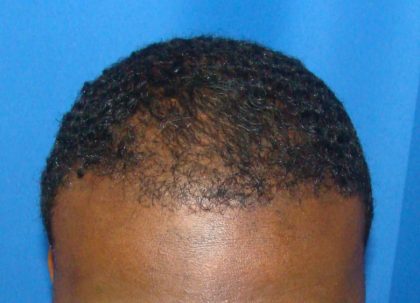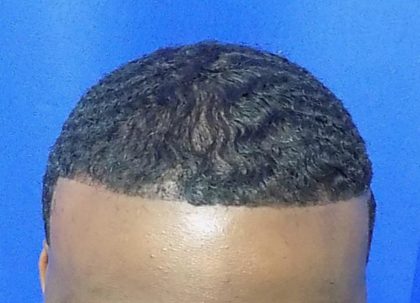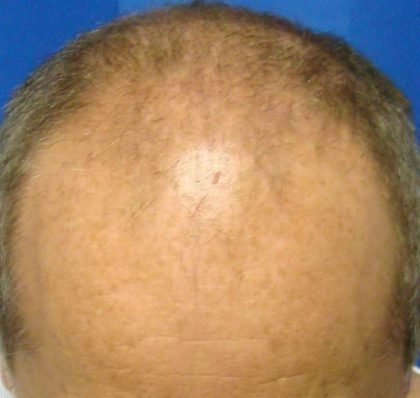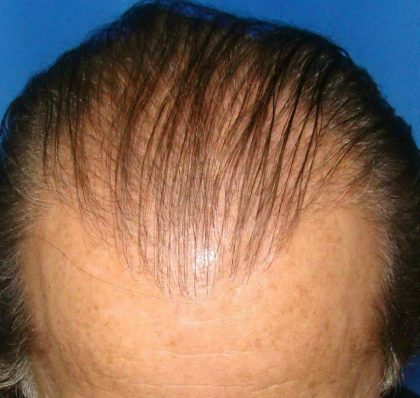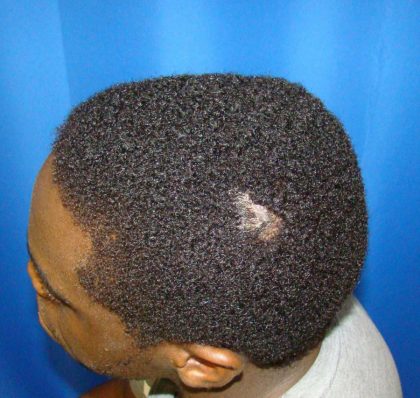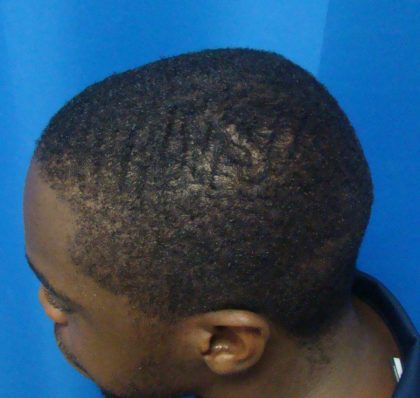Contents
What’s Next After My FUE Hair Transplant?
Follicular Unit Excision (FUE) is a minimally-invasive hair restoration procedure that expertly harvests, grafts, and extracts a patient’s own hair follicles and transplants them to areas of hair loss, promoting and restoring growth. Hair transplantation technology has come a long way in a brief period thanks to tools such as NeoGraft and ATERA which are used in FUE. These devices enable smaller (micro) grafts to be harvested, significantly improving the natural appearance of transplanted hair. (1) Patients that choose FUE for hair restoration enjoy an effective and efficient procedure with natural-looking results and a permanently enhanced hairline.
Understanding what recovery from FUE entails is important for patients considering a hair restoration procedure, and at the Houston Hair Transplant Center (HHTC), we work closely with our patients to ensure that they enjoy the best results possible. After an FUE procedure, patients are given an aftercare regimen to protect and maintain their results. This is an essential aspect of the treatment.
Dr. Goran Jezic is a Houston-based FUE specialist with the skills and knowledge required to provide the highest quality hair transplantation services. He is a leading expert in the field of ATERA and Neograft FUE procedures, and he and his experienced staff provide detailed pre-and post-operative instructions and ongoing support to each patient. Connect with the Houston Hair Transplant Center experts and discover what an FUE hair restoration treatment can do for you by calling our offices at (713) 864-2300 or filling out a quick, convenient online inquiry form to find out more.
Before and After Photos
About the FUE Recovery Process
Patients who are experiencing hair loss can find natural and permanent hair transplantation solutions and emotional relief through FUE in areas such as the scalp and eyebrows, or facial hair restoration. After your hair restoration procedure, it’s important to follow the aftercare instructions provided.
Get Some R&R
Although FUE is minimally invasive, it’s still an outpatient, office-based surgical procedure. So, even though you may be tempted to dive straight back into your daily routine, it’s crucial to allow yourself adequate recovery time. The first and arguably the most important step in the FUE recovery process is affording yourself some well-deserved, stress-free downtime. Dr. Jezic advises his patients to take a few days off work to avoid the pressures and strains of their usual weekday routine. This is particularly important for patients with physically demanding jobs. So, plan ahead with your employer, take a few days off, then sit back in comfort at home as your FUE treatment works its (scientific) magic!
Managing Discomfort
Studies have shown that post-operative pain after hair transplantation is significantly less severe in patients whose donor hair was harvested via FUE, than the alternative Follicular Unit Transplantation (FUT) method. (2) Having said this, discomfort in the immediate period after your FUE hair transplant can occur due to the large number of small wounds that are actively healing on the scalp. Your head may feel itchy and appear swollen. Our message to you regarding this is clear; don’t try to tough it out! We advise you not to shy away from taking over-the-counter oral pain medication under the direction of Dr. Jezic if you’re feeling uncomfortable, especially if you’re having trouble sleeping. We may also provide prescription topical and oral antibiotics, anti-inflammatories, and sleep medication where necessary to mitigate discomfort.
Important Note: If you’re experiencing bleeding or excessive swelling, get in touch with Dr. Jezic immediately for a follow-up assessment.
Bathing Routine
To help your results flourish, Dr. Jezic recommends waiting a full three days before taking a proper shower and around 10 days before you tackle the gym’s steam room and hot tub. The micro-incisions made during the FUE process will be vulnerable to foreign bacteria that, unfortunately, thrive in the moisture of a locker room. That’s not to say you should forego bathing altogether! When showering, take extra care to keep your scalp dry for the first few days after your hair transplant. Then, in around a week, you’ll be able to bathe as usual. When it’s time to wash your hair, do so with a mild, unscented shampoo such as Johnson’s Baby or a similar gentle product.
Lay Off Primping & Product
It may feel strange to suddenly be forbidden from touching your scalp, but that’s exactly the advice you should follow in the initial days of your hair transplant recovery. Keep your brushes and combs in the bathroom drawer and allow your newly grafted hair a chance to settle in. Similarly, you should avoid using products such as gels and pomades until you’re given the O.K. from Dr. Jezic.
Grin and Bare it
If you’ve experienced hair loss, you may have relied on a beanie, hat, or cap to hide thinning hair. But as you recover, it will be essential to avoid contact with the treatment area. Dr. Jezic will instruct you to forgo headwear, including helmets, hats, and hoods in the days after your hair restoration treatment. This is to ensure there is no possible interference or trauma caused to the delicate, newly-placed grafts.
Take Your Time
Finally, it is very important that you do not perform any strenuous activities for at least a week after your FUE procedure. Lifting, straining, and exercising could mean an increased risk of trauma to the healing scalp. So, just because we’re physically able to complete a task, doesn’t mean we should. Until otherwise directed, put the trip to the gym on hold and get someone else to do that heavy lifting. Through proper recovery, you’ll be able to enjoy the results of an effective hair restoration for years to come!
Benefits of FUE
The FUE method is a successful way to provide patients with a fuller head of hair. Its benefits include:
- Resolves areas of thinning hair
- Minimal downtime after the procedure
- Minimal scarring
- Improved self-confidence
- Natural-looking results
Take some time to explore your hair restoration options and get in touch with Houston Hair Transplant Center. Contact our front desk at (713) 864-2300 or inquire via our online form.
Candidates for FUE
Clinicians use the Norwood-Hamilton Scale to assess hair loss. Type one indicates very slight receding, whereas type 7 represents severe hair loss. FUE is suitable for patients with type 3 hair loss or higher on this scale. Patients with suitable, thick donor hair on the back of their heads may be great candidates for FUE. Generally, the procedure suits people looking to improve hair thinning and baldness on the front and top of their heads. You may not be able to receive FUE treatment if:
- The quality and quantity of donor hair is insufficient
- You have extensive hair loss
- You have scarring on your scalp
- You have the diffuse hair loss condition chronic telogen effluvium
- You have uncontrolled high blood pressure
- You have a blood clotting disorder such as hemophilia
- You have unreasonable expectations.
Personal Consultation with Dr. Jezic
As an expert hair transplant surgeon specializing in hair restoration, Dr. Jezic understands the deeply personal reasons for choosing hair transplantation surgery. He will meet with you in a one-on-one setting to listen to your concerns and assess the suitability of the donor hair area. He will then draw up an individualized FUE treatment plan for you and we will schedule your procedure date. If you have any questions or concerns, please feel free to discuss them with him.
What to Expect From Your FUE Hair Transplant
To begin the FUE treatment process, we will administer a local anesthetic in the treatment area for your comfort. We will carefully shave the donor site, so each graft is more accessible and easily removed. After this, Dr. Jezic and his team will use either the ATERA or NeoGraft FUE system to meticulously remove hair grafts using a special punch device. Each graft consists of 1-3 hair follicles. He will then prepare the follicles for implantation, separating them into groups of 1-4 hairs according to their size. (3) Then, with either an automated insertion device or manually, he will guide the grafts into the recipient sites with precise accuracy.
Following Dr. Jezic’s recovery advice is vital for an effective FUE treatment. In the days and weeks ahead, please ensure you follow these directions closely, and if you have any problems, please know that we are only a call away. In a few weeks, you may notice that some of the grafted hair falls out. This is a normal part of the hair restoration process, and can indicate that the hair follicle is progressing through the normal growth cycle, and will soon produce hair in its new location. Soon you will be able to show off your hair with restored confidence.
If you’re farther afield than Houston or if you have a hectic schedule, consider a Virtual Consultation with Dr. Jezic!
Cost of FUE Hair Transplant in Houston, TX
Each patient has different requirements when it comes to FUE. Some may want a procedure to address pattern baldness of the scalp, while others may have goals to address facial hair patchiness. At the Houston Hair Transplant Center we are transparent about pricing. We charge as low as $4.50 for each graft. Patients who want to address their hair loss in a more substantial way may opt for a so-called Mega-Session FUE procedure, where up to 4,000 grafts can be taken in an extended all-day session. The cost of an individual procedure to meet a patient’s needs will vary, so please speak to us about the cost of your hair transplant surgery at your personal consultation.
Check out Dr. Jezic’s blog and follow him on Facebook, Instagram, and YouTube for more information about FUE, hair transplantation techniques, non-surgical hair preservation strategies, and photos of real procedures performed at Houston Hair Transplant Center.
FAQ
How long does it take to recover fully from an FUE hair transplant?
Every patient is different, and therefore their response to hair transplantation will differ. In the initial seven to fourteen days, the follicles will crust over and some of the donor hair will fall out. After one to two weeks, this will resolve and the area will heal. It takes, on average, between six and twelve months to see the finished results of follicular unit extraction hair restoration.
Can I use my regular hair products after FUE?
Given the extensive range of hair products on the market, it is very important to discuss what you plan to put on your hair after FUE with your doctor. Most surgeons who specialize in hair restoration encourage patients to use a very gentle shampoo and other non-drying, unscented products during their FUE recovery. Speak to your surgeon about when you can switch back to your regular products.
Will there be a large scar after my hair restoration procedure?
The scarring after an FUE procedure is minimal. Donor area scars alternate between strips of untouched hair and extraction areas, which will be less visible when the hair grows out. A skilled hair restoration surgeon will choose a suitable donor area from which to harvest grafts, ensuring the area will heal as discreetly and effectively as possible.
References
- Parsley, W. M., & Perez-Meza, D. (2010). Review of factors affecting the growth and survival of follicular grafts. Journal of Cutaneous and Aesthetic Surgery, 3(2), 69–75. https://doi.org/10.4103/0974-2077.69014
- Kim, Y. S., Na, Y. C., & Park, J. H. (2019). Comparison of postoperative pain according to the harvesting method used in hair restorative surgery. Archives of Plastic Surgery, 46(3), 241–247. https://doi.org/10.5999/aps.2018.00843
- Josephitis, D., & Shapiro, R. (2018). FUT vs. FUE Graft Survival: A Side-by-Side Study of 3 Patients Undergoing a Routine 2,000+ Graft Hair Transplantation. International Society of Hair Restoration Surgery, 28(5), 179–182. https://doi.org/10.33589/28.5.0179

